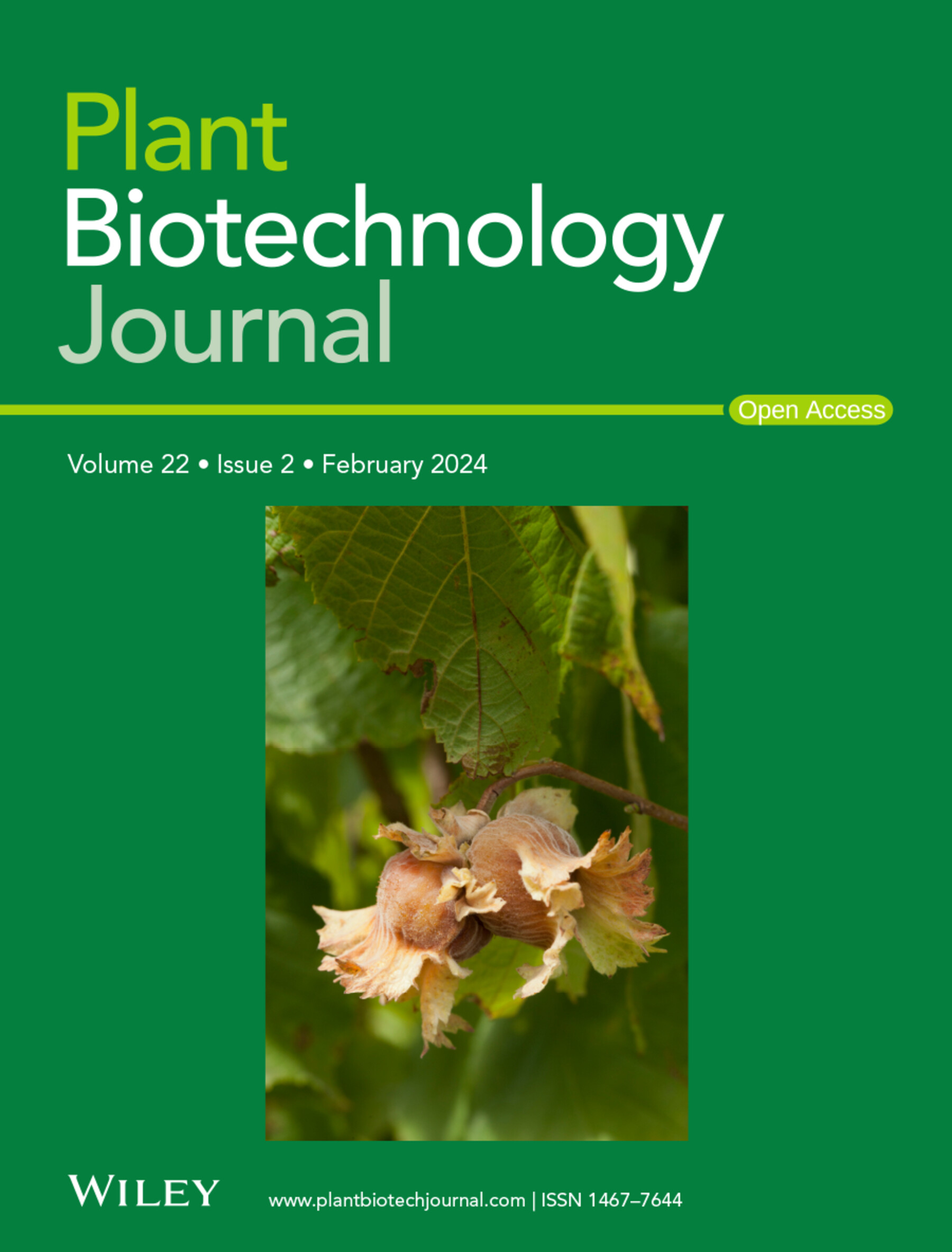Regulation of jasmonic acid signalling in tomato cold stress response: Insights into the MYB15‐LOXD and MYB15‐MYC2‐LOXD regulatory modules
IF 10.1
1区 生物学
Q1 BIOTECHNOLOGY & APPLIED MICROBIOLOGY
引用次数: 0
Abstract
SummaryCold stress significantly affects the growth and productivity of tomatoes. Despite the known involvement of jasmonate (JA) in cold stress responses, the underlying mechanism remains to be elucidated. Here, we observed that JA peaked 24 h after cold treatment. The expression of the茉莉酸信号在番茄冷胁迫反应中的调控:MYB15‐LOXD和MYB15‐MYC2‐LOXD调控模块的研究
冷胁迫对番茄的生长和产量有显著影响。尽管已知茉莉酸盐(JA)参与冷应激反应,但其潜在机制仍有待阐明。在这里,我们观察到JA在冷处理后24 h达到峰值。SlLOXD基因是JA合成的关键基因,其表达也在低温处理24 h达到峰值,SlLOXD基因突变降低了JA含量和耐寒性。在JA信号的下游,转录因子SlMYC2通过直接结合SlCBF1/2启动子参与增强抗寒性。此外,SlMYC2沉默植株和突变体对冷损伤表现出更高的敏感性。此外,SlMYB15直接结合到SlLOXD和SlMYC2启动子上。冷胁迫6 h内,SlMYB15激活SlLOXD表达,抑制SlMYC2表达。在6 ~ 24 h之间,SlMYB15的表达水平下降,从而减轻了SlMYC2表达的抑制。SlMYC2通过激活SlLOXD转录进一步增强JA信号,从而提高番茄植株的耐寒性。这些发现为SlMYB15对SlLOXD-SlMYC2 -CBF1/2模块的动态调控及其在番茄冷胁迫反应中的关键作用提供了有价值的见解。
本文章由计算机程序翻译,如有差异,请以英文原文为准。
求助全文
约1分钟内获得全文
求助全文
来源期刊

Plant Biotechnology Journal
生物-生物工程与应用微生物
CiteScore
20.50
自引率
2.90%
发文量
201
审稿时长
1 months
期刊介绍:
Plant Biotechnology Journal aspires to publish original research and insightful reviews of high impact, authored by prominent researchers in applied plant science. The journal places a special emphasis on molecular plant sciences and their practical applications through plant biotechnology. Our goal is to establish a platform for showcasing significant advances in the field, encompassing curiosity-driven studies with potential applications, strategic research in plant biotechnology, scientific analysis of crucial issues for the beneficial utilization of plant sciences, and assessments of the performance of plant biotechnology products in practical applications.
 求助内容:
求助内容: 应助结果提醒方式:
应助结果提醒方式:


